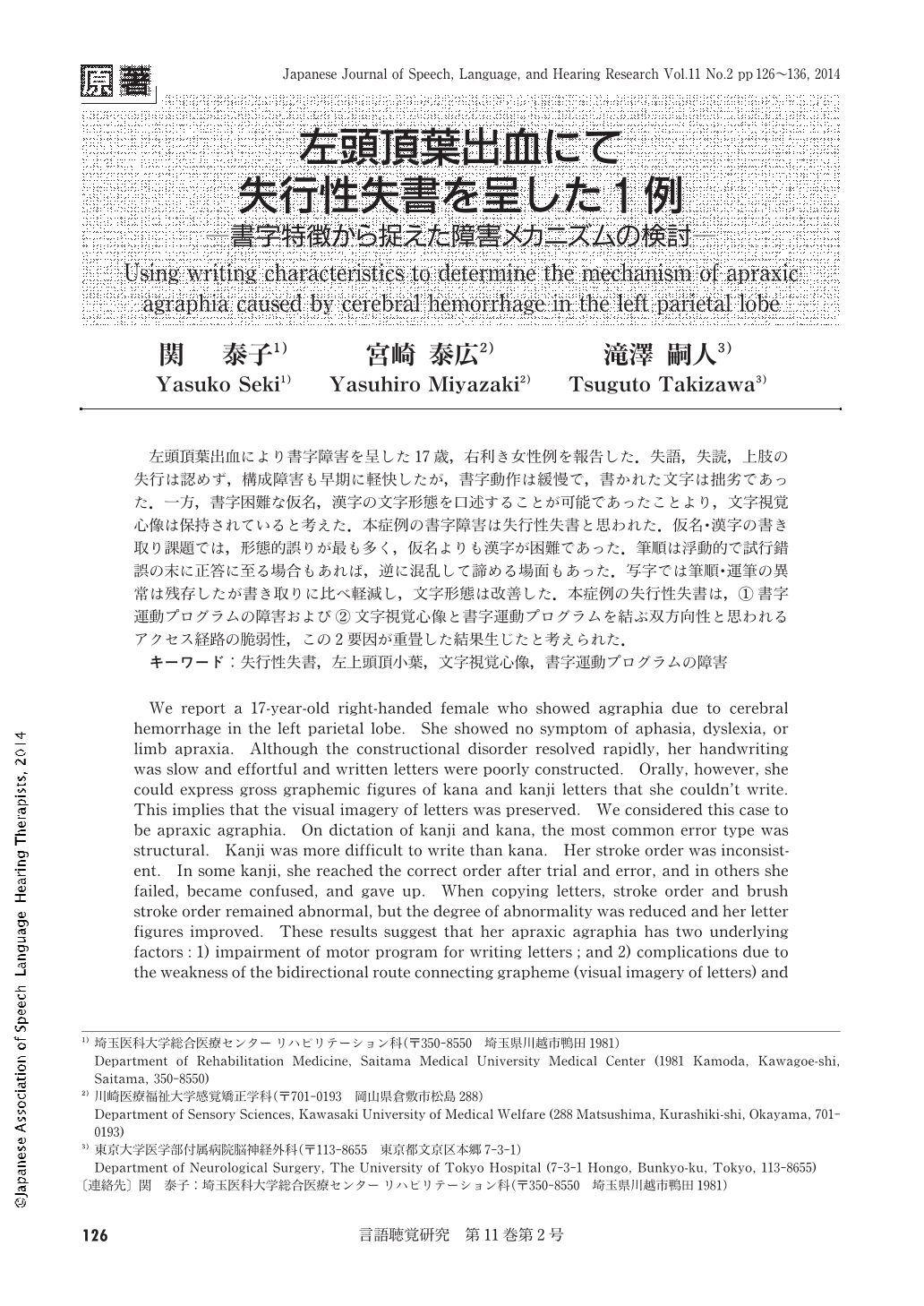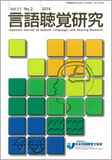Japanese
English
- 有料閲覧
- Abstract 文献概要
- 1ページ目 Look Inside
- 参考文献 Reference
左頭頂葉出血により書字障害を呈した17歳,右利き女性例を報告した.失語,失読,上肢の失行は認めず,構成障害も早期に軽快したが,書字動作は緩慢で,書かれた文字は拙劣であった.一方,書字困難な仮名,漢字の文字形態を口述することが可能であったことより,文字視覚心像は保持されていると考えた.本症例の書字障害は失行性失書と思われた.仮名・漢字の書き取り課題では,形態的誤りが最も多く,仮名よりも漢字が困難であった.筆順は浮動的で試行錯誤の末に正答に至る場合もあれば,逆に混乱して諦める場面もあった.写字では筆順・運筆の異常は残存したが書き取りに比べ軽減し,文字形態は改善した.本症例の失行性失書は,①書字運動プログラムの障害および②文字視覚心像と書字運動プログラムを結ぶ双方向性と思われるアクセス経路の脆弱性,この2要因が重畳した結果生じたと考えられた.
We report a 17-year-old right-handed female who showed agraphia due to cerebral hemorrhage in the left parietal lobe. She showed no symptom of aphasia, dyslexia, or limb apraxia. Although the constructional disorder resolved rapidly, her handwriting was slow and effortful and written letters were poorly constructed. Orally, however, she could express gross graphemic figures of kana and kanji letters that she couldn't write. This implies that the visual imagery of letters was preserved. We considered this case to be apraxic agraphia. On dictation of kanji and kana, the most common error type was structural. Kanji was more difficult to write than kana. Her stroke order was inconsistent. In some kanji, she reached the correct order after trial and error, and in others she failed, became confused, and gave up. When copying letters, stroke order and brush stroke order remained abnormal, but the degree of abnormality was reduced and her letter figures improved. These results suggest that her apraxic agraphia has two underlying factors:1) impairment of motor program for writing letters;and 2) complications due to the weakness of the bidirectional route connecting grapheme (visual imagery of letters) and motor program for writing.

Copyright © 2014, Japanese Association of Speech-Language-Hearing Therapists. All rights reserved.


